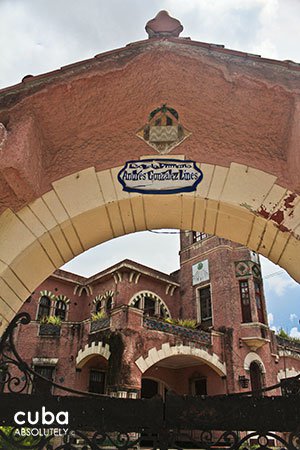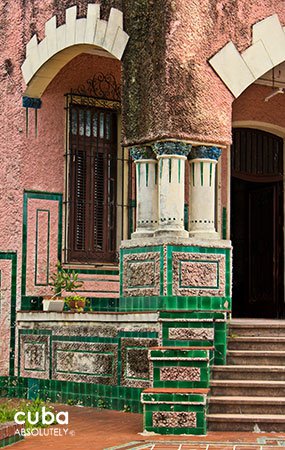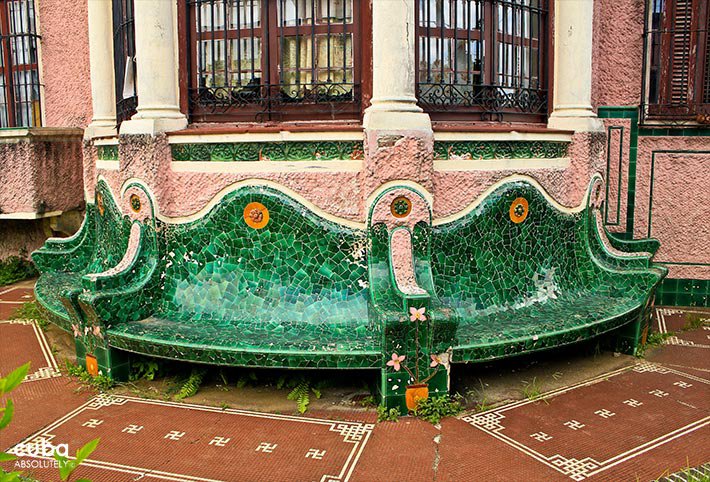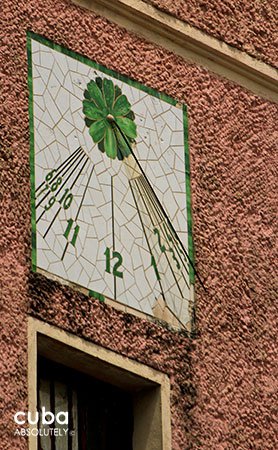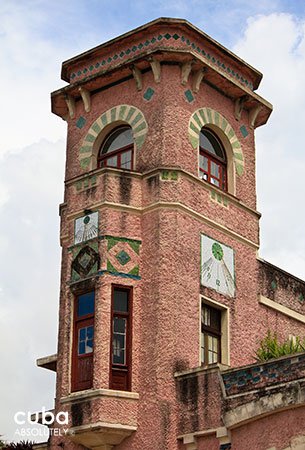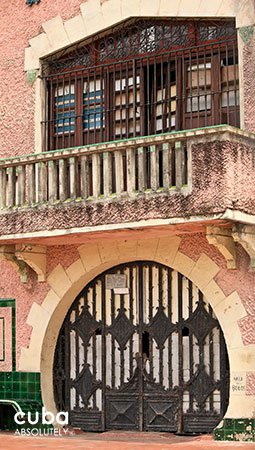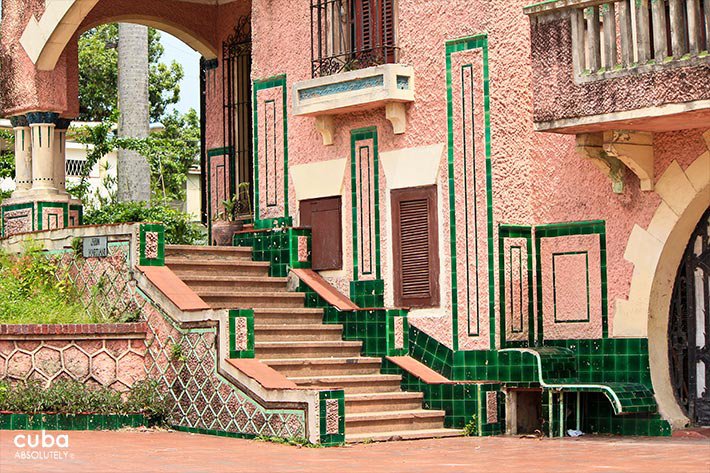Another modernist gem by Rotllant, who on this occasion proclaimed his Catalan ancestry. Like in Dámaso Gutiérrez’s home, the stylistic harmony between interiors and exteriors surprises pleasingly. The delicate work in glazed pottery (the benches outside are reminiscent of those at the famous Güell Park by Catalonian architect Antoni Gaudí), the display of stained-glass windows and wrought-iron work, and the harmony in size are prominent in this house. Occupied today by a school, as well as that of Dámaso Gutiérrez’s, it has experienced a better fate. It has been fairly well preserved (despite the change of color on the outside) and, amazingly, the magnificent stained-glass window with the image of a peacock, which is considered the most significant in Cuban Art Nouveau, is still intact.

Plaza de San Francisco LH  5+
5+
Right across Havana harbor, Plaza de San Francisco is one of the first three built in the 16th century. It takes its name from the Franciscan convent built there. The plaza became the site of a market …

Plaza de la Catedral LH  5+
5+
The last of the main squares to be created, this is one of Old Havana’s most beautiful spots. Originally, it was named Plaza de la Ciénaga (Swamp Square) because of its muddy terrain, but by the 18th …

Hotel Nacional de Cuba LH  5+
5+
In response to the increasing influx of American tourists in the late 20s (mainly those who were escaping Prohibition, in force in the United States at the time), the construction of a luxury hotel wa …
 Eclectic
Eclectic $61 - $81ROOMS: 426O esquina a 21
$61 - $81ROOMS: 426O esquina a 21 
Callejón de Hamel LH  5+
5+
The narrow two-block long alley between Aramburu and Hospital streets in Centro Habana has over the years become a shrine to Afro-Cuban religions through the art created by Salvador González. The buil …

The Malecón LH  5+
5+
The Malecón, first named Avenida del Golfo, is Cuba’s most famous sea-side avenue. The project was undertaken by Don Francisco de Albear, Cuba’s greatest engineer at the time. Albear came up with a co …
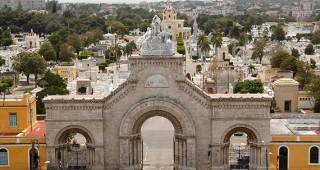
Necrópolis de Cristóbal Colón LH  5+
5+
History & architecture Declared National Monument in 1987, this is the most important cemetery in Cuba and its 57 hectares (10 acres) makes it the largest in America. According to Enrique Martínez …
 EclecticAdmission: CUC 1Open: 9am-5pm dailyZapata y 12
EclecticAdmission: CUC 1Open: 9am-5pm dailyZapata y 12 
Iglesia de Jesús de Miramar LH  5
5
Opened in 1953, this is Cuba’s second largest church, which is visible for several blocks due to its vast dome built in Roman-Byzantine style. The Jesús de Miramar church boasts 14 large mural paintin …
 OtherOpen: 9am-noon, 4-6pm daily; Mass: 9am Mon-Fri; 9am, 5pm Sat-Sun; To visit at other times, enter via the sacristy5ta #8003 entre 80 y 82
OtherOpen: 9am-noon, 4-6pm daily; Mass: 9am Mon-Fri; 9am, 5pm Sat-Sun; To visit at other times, enter via the sacristy5ta #8003 entre 80 y 82 
Catedral de La Habana LH  5+
5+
The entry of the Jesuits in Cuba was formally requested in 1656, and in 1727, a plot was granted for their school and church. Bishop Brother Gerónimo Valdés explained to the King of Spain that Havana’ …
 BaroqueAdmission: FreeOpen: 10:30am-3pm Mon-SunEmpedrado #156 e/ San Ignacio y Mercaderes, Habana Vieja
BaroqueAdmission: FreeOpen: 10:30am-3pm Mon-SunEmpedrado #156 e/ San Ignacio y Mercaderes, Habana Vieja 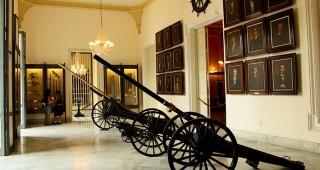
Museo de la Ciudad (Palacio de los Capitanes Generales) LH  5
5
History & architecture Considered the most important example of baroque architecture in the city, this grand building on the west side of the plaza was built in 1792, on the sight of the former pa …
 BaroqueAdmission: CUC 3Open: 9am-6pm dailyCuba e/ Obispo y O’Reilly, Habana Vieja
BaroqueAdmission: CUC 3Open: 9am-6pm dailyCuba e/ Obispo y O’Reilly, Habana Vieja 
Iglesia de San Francisco de Paula LH  5
5
In 1664 the Presbyter of the Cathedral of Havana, don Nicolás Estévez Borges, ordered the construction of a chapel devoted to Saint Francis of Paola (founder of the Roman Catholic Order of the Minims) …
 BaroqueAdmission: FreeAvenida del Puerto, esq. a San Ignacio, Habana Vieja
BaroqueAdmission: FreeAvenida del Puerto, esq. a San Ignacio, Habana Vieja 
